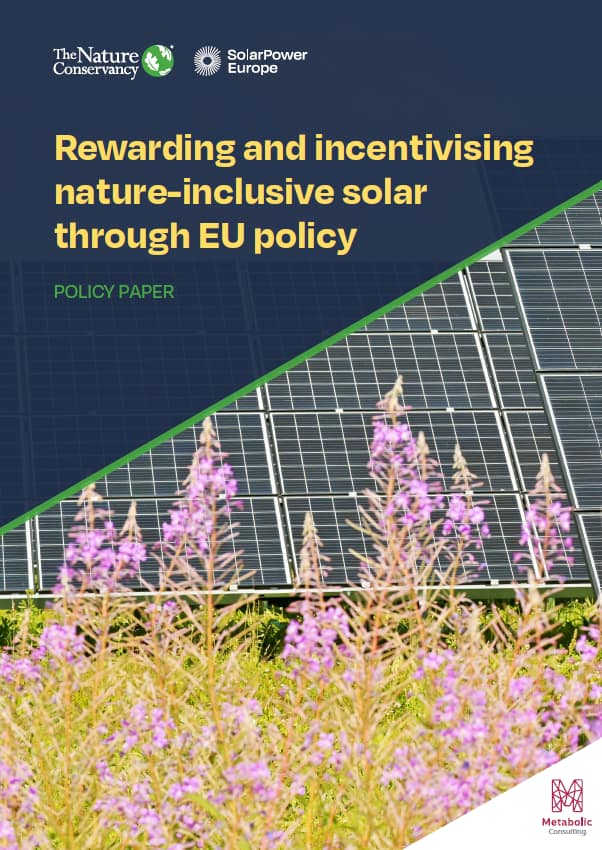Nature-inclusive solar parks in the EU
Solar parks that integrate nature into the design are a promising development for biodiversity. But how do we ensure solar developers deliver on their promises?
By combining nature conservation and green energy production on the same plot of land, nature-inclusive solar parks promise to tackle the biodiversity loss and climate change crises simultaneously. This proposition, while attractive, is currently poorly defined and is unsupported within an EU policy context. In this policy paper, we provide recommendations on how the EU could reshape its policy environment to accommodate the creation of more nature-inclusive solar parks.
- Client: TNC
- Partners: SPE
- Date: October 2024
Solar parks may present an opportunity for nature – but under what conditions?
Solar energy production is a key source of green energy and the EU plans to significantly increase its capacity by 2030. However, solar parks have been under scrutiny since they can increase competition for land. Especially in light of the new Nature Restoration Law, which aims to restore 20% of the EU’s degraded land, competition between solar parks and nature conservation could become increasingly likely. One solution is to integrate nature conservation into the planning when designing new solar parks, thereby making them ‘nature-inclusive’. Unfortunately, this concept is poorly defined and not accounted for in current EU policy.
A systemic approach to nature-inclusive solar
Our research consisted of two parts:
- A deep dive into the technical and conceptual aspects of solar parks and the potential biodiversity benefits gained by making them nature-inclusive.
- An assessment of current EU policies.
The former allowed us to apply our systems thinking perspective to this topic and consider potential benefits and trade-offs between solar parks and biodiversity conservation. We then combined this knowledge with our detailed policy analysis to define a clear path forward for EU policymakers.
The EU should integrate nature-inclusive solar in its policies, but a clear definition is needed
The policy paper provides several recommendations for designing effective EU policies. The first step is providing a clear and ambitious definition of ‘nature-inclusive solar parks’. Alongside this, guidance should be provided to developers, especially around siting, construction practices, and management throughout the solar park’s entire life cycle. For nature-inclusive solar to be mainstreamed, a more supportive policy environment should be created, and these policies should be integrated into local legal frameworks, where spatial planning often takes place. Experts and local communities should be involved in the planning process to consider landscape-scale impacts and ensure that these solutions work for nature and people.










